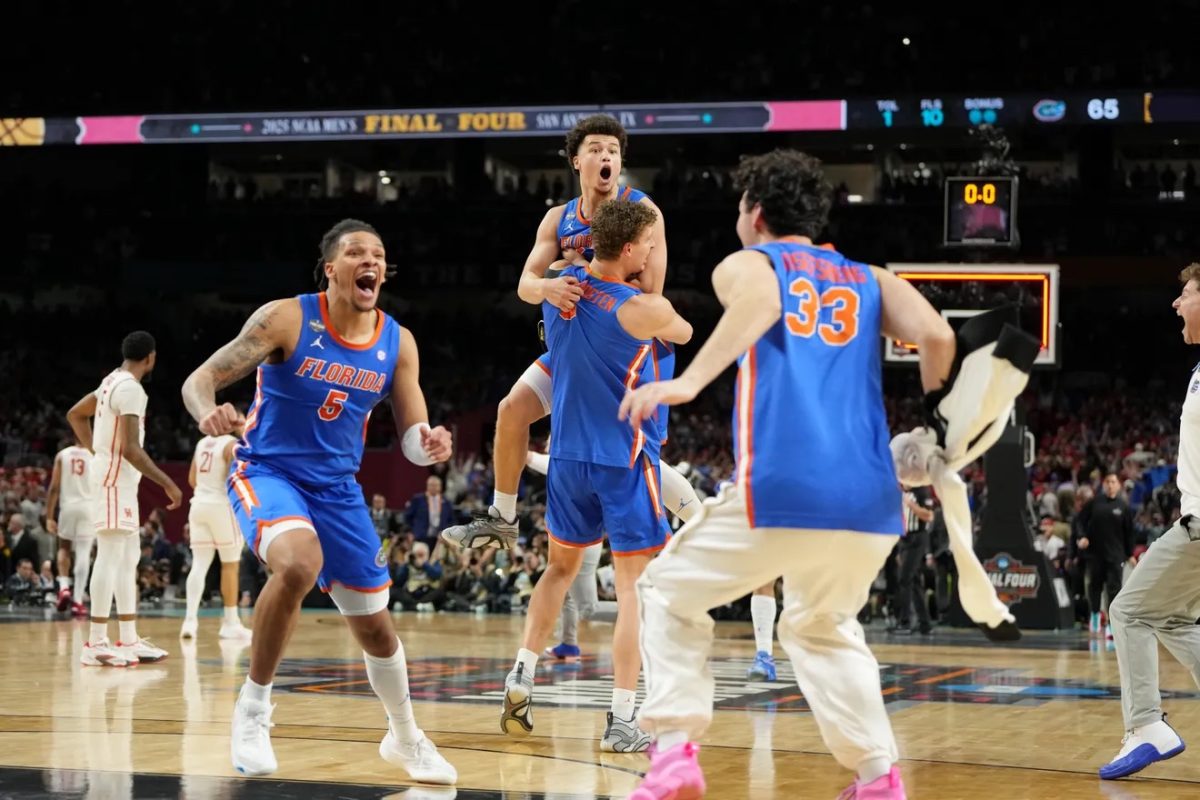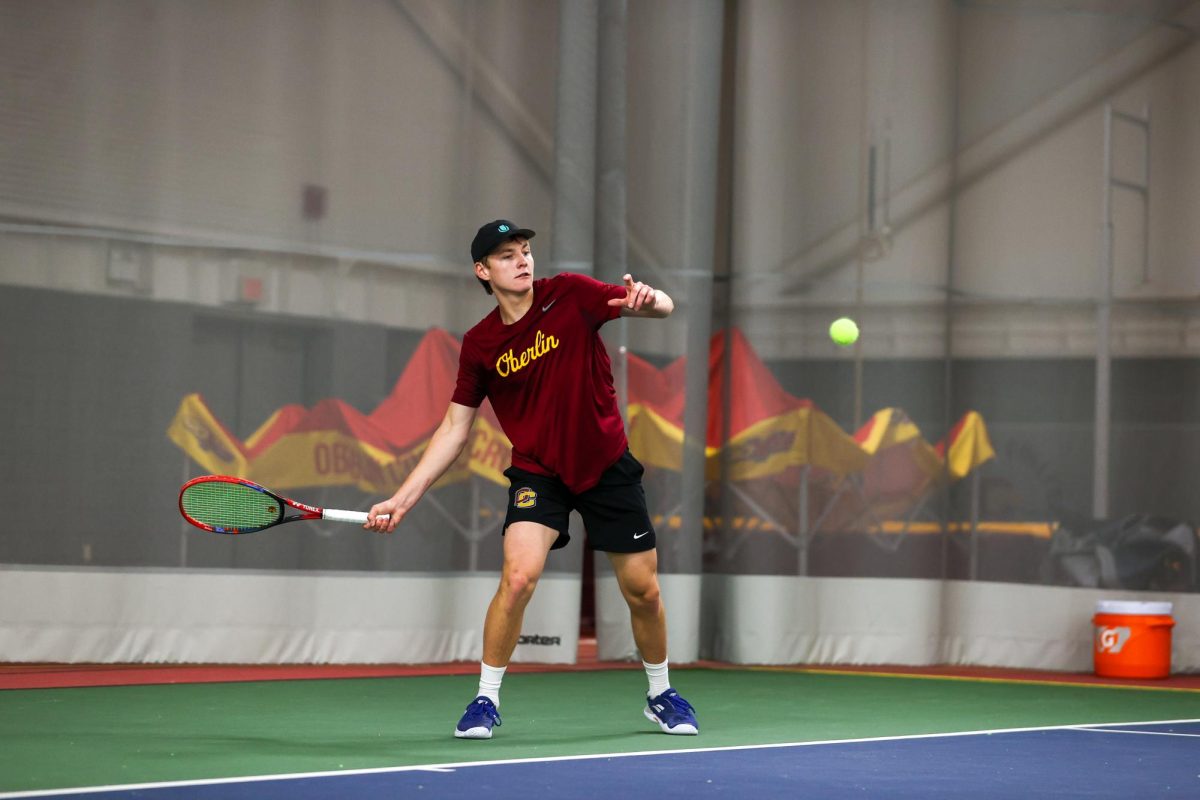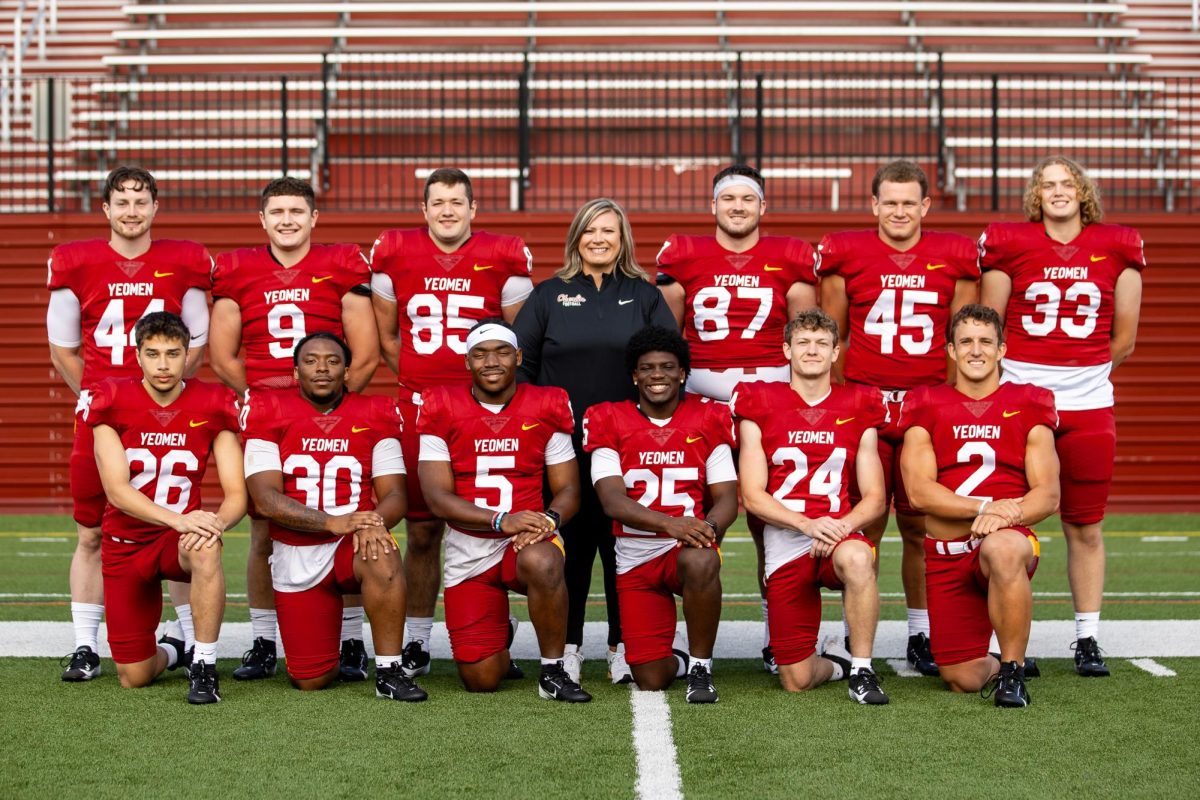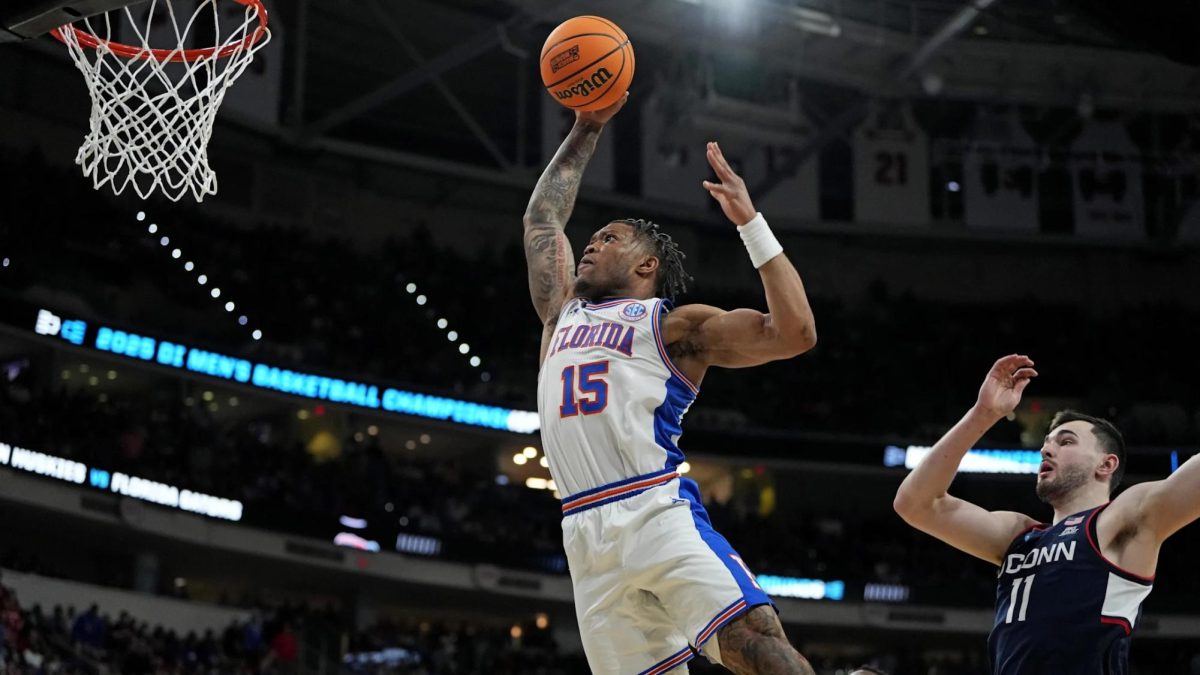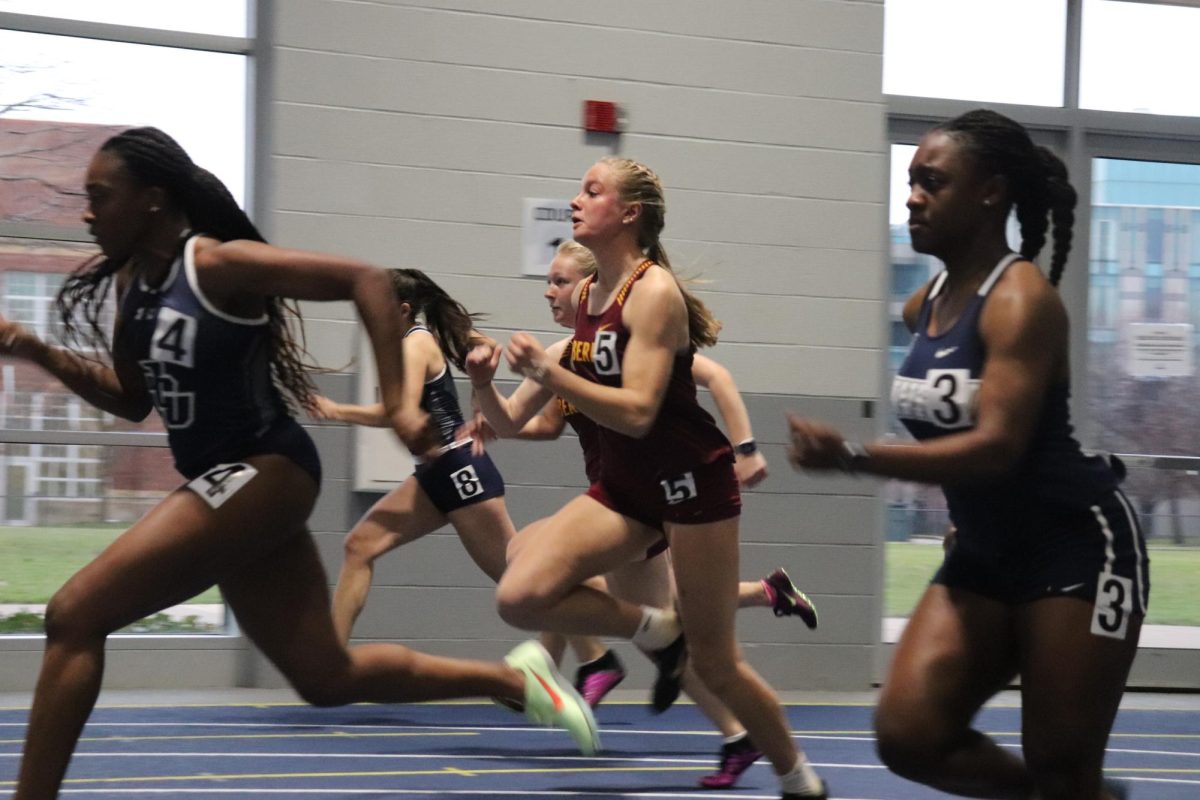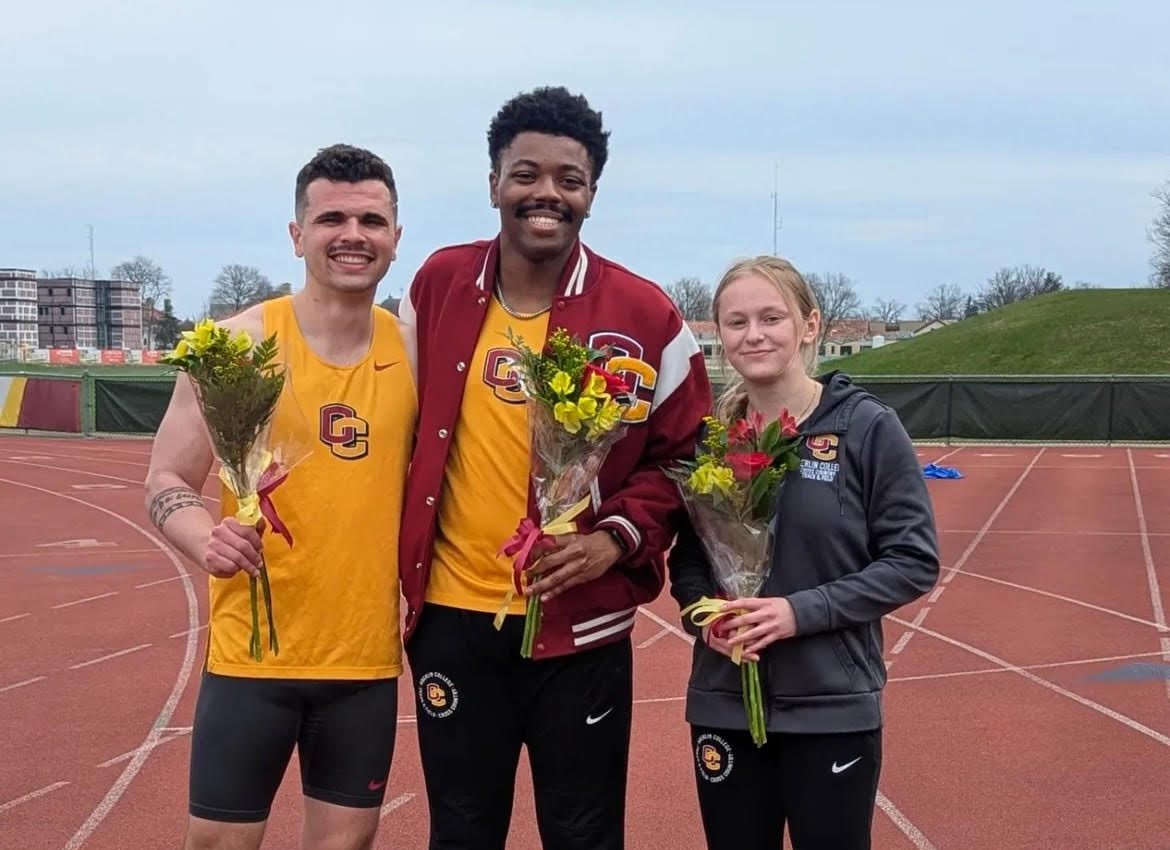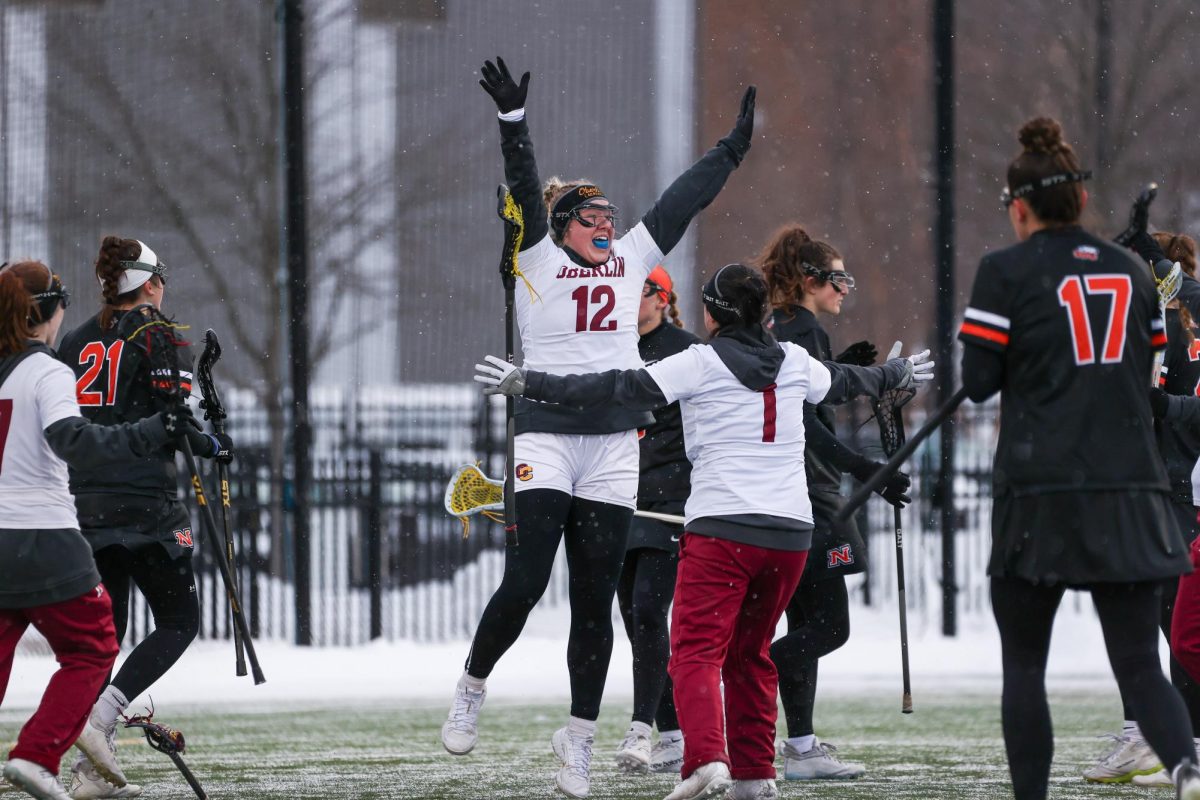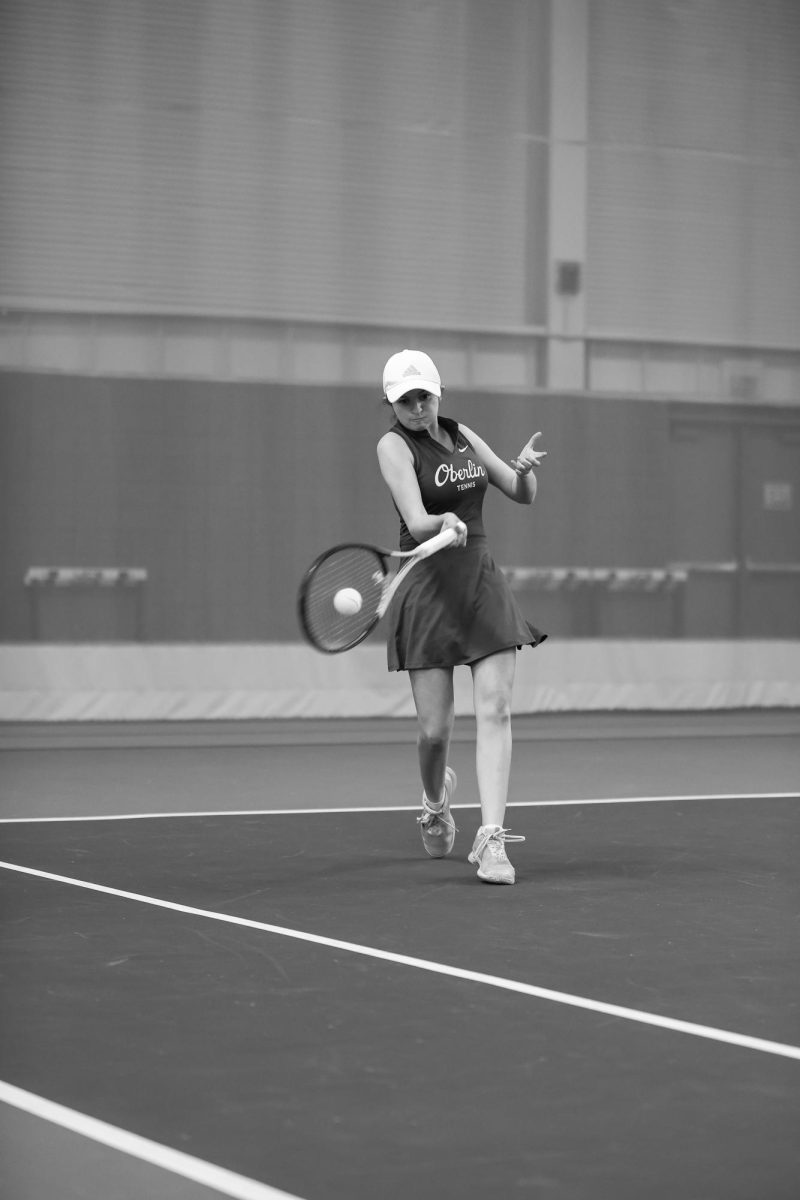As cheers rang through the Heisman Club Field House last weekend, the Oberlin College track and field team ran, leapt, and threw in the North Coast Athletic Conference Indoor Track and Field Championships, which were hosted at Oberlin for the first time since 2017.
Star jumper Namu Makatiani leapt to his second consecutive conference title in the men’s triple jump. Makatiani, a third-year, was slated to defend his title before the competition began, but his win was by no means a foregone conclusion.
While competing in Oberlin gave Makatiani a home-track advantage, he found the combination of wanting to impress his friends and the pressure of coming in as defending champion with expectations of repeating to be stressful.
“I think I’m so used to competing with just my team around, so when my friends were also around, it added a little bit of pressure to have your best performance on that day,” Makatiani said. “But going into the week, I think it was just a lot of stress with triple jump specifically, just because I was seeded to win it, so that was a lot of points for Oberlin.”
Oberlin’s coaching staff — which is comprised of Head Coach Ben Wach, Assistant Head Coach Izzy Alexander, Jumps Coach Ray Harris, Throws Coach Jillian Roberts, Sprints and Hurdles Coach Eric Klopfenstein, and Distance Coach Eric Line — had noticed Makatiani’s tension was high during the preliminary jumps, and gave him a unique idea to help him get into a productive mindset.
“After the prelims, my coaches pulled me aside, they were like, ‘We can tell you’re not having fun,’” Makatiani said. “So they told me to think about Lizzo performing. All I can think about is just her flute and dancing on stage and stuff like that. So, it was just a bunch of mindset games with myself, just to get myself to stop thinking about the performance and just think about having fun.”
The Kenya native led the field for the entirety of the competition, up until the last jump, when Wabash College’s Sylvester Williams surpassed Makatiani with a jump of 14.02 meters. Suddenly, all the pressure was on the defending champion, who started a clap to get his teammates and the crowd energized. Using the boisterous environment to his advantage, Makatiani flew through the air to a 14.32-meter jump, cementing his title defense and earning 10 of Oberlin’s 82 points.
In the men’s long jump, Makatiani racked up six more points with his third-place jump of 6.89 meters. Fourth-year Heather Benway finished fourth in the women’s long jump with her leap of 5.22 meters to give the Yeowomen five points, while third-year Anna Fritz finished sixth in the women’s triple jump to earn three points with her 10.19 meter jump.
Being the loudest team that is having the most fun has been a consistent goal for Oberlin track and field through the years. The team prides itself on being so vocally supportive of each other that it can bother other teams while boosting Oberlin athletes. This camaraderie, while important during the regular season, is crucial during conference championships because it is the only meet during the season that the team’s standing in the competition is paramount and each individual’s performance is contributing points to the team’s score. During the regular season, it is more important for athletes to be improving their personal records so they have results that are good enough to qualify for conference championships.
“There’s an inevitability of feeling the stakes raise a little bit at the conference championship,” Coach Wach said. “But if you can lean on this habit of going, ‘You know, I’ve got the support of my team and community, I’ve prepared and I’m going to take this thing head on,’ it’s a little easier to do it when you’re aware of the points on the line.”
Although the men finished fifth out of nine teams and the women seventh out of eight teams, Wach said that the team’s results are far more impressive than the standings show, as most of the other teams in the conference have many more athletes who can be putting up points for their schools.
“We have a relatively small team, and so we only get so many opportunities to score and to show up for each other,” Wach said. “We really capitalized on what we had. I mean, a great microcosm of the weekend is that our women’s 4×400 team averaged 62.28 seconds per leg, and that gave them all confidence. The fastest open 400 anyone on our team ran this year was 62.27 [seconds]. So, they all gained confidence as a group by running as quickly as the very best we have the entire year.”
Although such a result could be surprising to some coaches, Wach expressed that his athletes leaning on one another to maximize their potentials had become a consistent sight.
“Interreliance has been a theme of the season, and even more so has been [the act of] capitalizing on the opportunity in front of you,” Wach said.
Two relay teams who made the most of their opportunities were the men’s distance medley relay team and the women’s 4×400-meter relay team. The DMR features four legs that are all different distances — the first leg is 1200 meters, or six laps on the 200-meter track, the second leg is 400 meters, the third leg is 800 meters, and the fourth leg is 1600 meters. Second-year Piers Shirk, first-year Raluchi Obioha, fourth-year Ezra Taub, and fourth-year Walter Moak finished in 10:21.92 to grab first place in the DMR and earn ten points for Oberlin.
In the women’s 4×400, third-year Ryley Steggall, first-year Yrva Desormeaux, fourth-year Camila Ciembroniewicz, and fourth-year Sage Serraino finished in 4:09.39 to seal a third-place finish and tally six points for their team.
Serraino was no stranger to success during these championships. While they enjoy running the 4×400, their “heart event” is the 800-meter race.
Heading into the race, Serraino’s main goal was clear — run faster than Kenyon College’s Anna Brown, who had finished first ahead of Serraino’s second in the prelims. After finishing the prelim heat in under 2 minutes and 20 seconds, and without pushing to the limit, Serraino entered the final heat brimming with confidence.
“I was just ready to compete, so I went up to the line thinking, ‘Okay, maybe I’ll get first, maybe I’ll get second. Regardless, I’m going to run as fast as I can, as hard as I can, and I’m going to compete,’” Serraino said.
Knowing that they were one of the quickest racers on the track, one of the most important aspects of the race for Serraino was not getting “boxed in” by other runners, in which they would be surrounded and unable to break free from the pack. The fear of others slowing them down was at the forefront of Serraino’s mind as they lined up to start the race. As soon as the gun went off, Serraino pushed hard to get themself towards the front of the pack, alongside teammate Ciembroniewicz. The Oberlin duo led the pack for the first lap and a half until Brown whizzed past, at which point Ciembroniewicz said, “Go Sage,” giving their teammate the encouragement they needed.
Brown was just ahead of Serraino through the second lap until the Oberlin runner noticed a third racer coming up behind them, threatening to box them in. Brown, in a smart and strategic move, didn’t let Serraino past, which pushed the Oberlin runner into third and prevented them from running at their full speed.
“At this point, the thought that goes through my head is honestly like, ‘Okay, I’m bored,’” Serraino said. “I was like sitting there, and we were running, and I was like, ‘I can go a lot faster than this.’”
As soon as the runners got to the straightaway of the back stretch, Serraino took off and snatched the lead from Brown. Serraino had the lead when the bell sounded, signifying the last lap of the race, but knew that a win wasn’t guaranteed.
“It honestly felt like a crazy game of tag, where everyone’s cheering, but the thing about cheering is that when you’re in front, you feel like the next person is breathing on your neck, even if they’re not, since I don’t know if people are cheering because I’m running great, or if because someone’s about to pass me,” Serraino said. “So I just put in every little bit of training that I had running that last curve, and it wasn’t until I whipped around on that curve down the straightaway that I had the realization of like, ‘Wait, this race is mine.’”
Serraino finished with a time of 2:17.91, over two and a half seconds in front of second-place Brown, for their first conference title in the 800-meter.
While the majority of the team has already begun preparing for the outdoor season, Serraino, Makatiani, and others will be competing this weekend at the Last Chance Meet with the hope of qualifying for nationals.
A key difference between the indoor and outdoor seasons is the addition of both track and field events, including the 100-meter dash instead of the 60-meter dash, the 400-meter hurdles, the steeplechase, the discus throw, and the javelin throw. Two of Oberlin’s highest-scoring athletes — Makatiani and Moak — are specialists in the 110-meter hurdles and steeplechase, respectively.
“Outdoor, I should be a little bit stronger, because one of my weakest areas in hurdling is the start,” Makatiani said. “Typically I’m very good throughout the hurdles themselves, but just the start is where I’m slowest. So, giving me more distance to catch up to the rest of the field and potentially pass them is only going to be helpful.”
Moving to the outdoor track will also be beneficial to the team, as its two Combined Event athletes — Celia Vaughn on the women’s team and Kit Evans on the men’s team — are talented javelin throwers who will be looking to put up points in the event.
The team will begin outdoor competitions on March 28 with the Bob Kahn Invitational at Robert Lewis Kahn Track.



